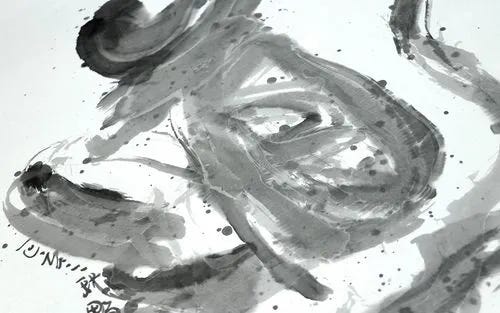A Meta Update – XY-Wise
For the time being, I have decided to call this publication XY-Wise.
It’s been a while musing about what I should call this substack.
A few weeks ago, I had the intuition that my initials (XY, from my Chinese name) seem fairly uncommon and a good starting place.
While doing some personal reflection yesterday, I was listing out some parameters of what I was thinking about. As I typed out “Constraint-Wise” and then “Idea-Wise”, I noticed this “-wise” suffix is a pretty interesting augmentation to nouns, and quickly put two and two together, arriving at: “XY-Wise”
XY has a number of associations beyond being my initials. While I greatly like the math association here both as the most commonly used variables and as the axes of the most common coordinate system.1 This isn’t the main reason.
The reason why I wanted to use my initial is because it shares the same initial as a Taoist concept that is a central theme in my worldview and learning – XiaoYao (逍遥). Chuang Tzu, both the name of the author and the name of the Taoist text, introduced this concept over 2,000 years ago.
Despite it being a fairly common term in the Chinese language, I have yet to be satisfied with any English translation. Some contenders could be “Carefree”, “Untroubled Ease” or “Unimpeded”. Personally, I think “Freedom” is a decent translation, but the Western notion of Freedom is fairly distant from what Freedom is meant here.
For me, XiaoYao is better captured and conveyed through aesthetics. Chinese art, and in particular Taoist art, ancient and modern, tend to represent it well for me.2
Here’s a sample that evokes the notion of XiaoYao for me:
If The Wanderer Above The Sea Fog is a Western expression of a similar idea. The difference in the Eastern expression is in the body language and composition relative to the clouds. The man is more so “Being-With” as opposed to “On-Top-Of”. He is a smaller presence and melds into the landscape, rather than at the center of it.
There are two main types of such an instrument in China. The Guzheng and the Guqin (featured in this video). The former tends to be more of a performative instrument and the latter tends to be a contemplative instrument. I was once told by someone that the Guzheng is performed for others, while the Guqin is performed for the self.
Caligraphy is one of the “Four Arts” of ancient China. Here’s a good example of expressing the flow, impermanence, and unimpededness of XiaoYao, through the act of each stroke. The character illustrated is Tao (道), in Chinese.
More anthropologically, here is the image search results for "Taoism, XiaoYao" on Baidu (Chinese Google), which will give a broader flavor of how the general vibe feels.
Meanwhile, “-Wise” had a pretty straight forward meaning for me – the dual utility of both “about XY”/“with respect to XY” and “XY towards Wisdom”. I was pleasantly surprised when a search yielded that it can also mean “In the direction of”, which also seems great.
In other words, XY-Wise means Towards and About XiaoYao, Towards and About Me, and My Relationship Towards Wisdom.
As part of the aforementioned personal reflection, I think I also have further clarity on what I’d like to use this substack for and how I want to do it. The name is meant to be a reflection and ownership of that developing clarity.
If David is also incorporated, it forms DXY, which gives nice calculus vibes. 🤓
The modern notion of XiaoYao is usually too entangled with Chinese fantasy/mythology to be very philosophically clear, but since I was also raised on it, it often ends up capturing the spirit for me as well. That tends to look more like this. (Baidu search results for just “XiaoYao”, without “Taoism” included as a search term.)





that's deep bro